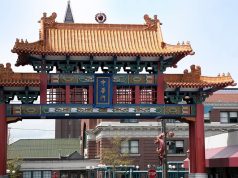[Editor’s Note: Practically no one who covered the tumultuous WTO protests in Seattle in late 1999 knew of the guerilla tactics that were being instigated, not on our city streets, but in Seattle’s illustrious corner of cyberspace.
I happened to file this report at the time for Courtney Pulitzer’s Cyber Scene: “Despite repeated attacks, the WTO’s host-committee website stayed up and running. Jeff Demetrescu, chair of the Seattle Web Site Committee commented: “The fact that protestors succeeded in bringing down the main WTO site in Switzerland while ours [the Seattle site] stayed up puts the accomplishment in perspective.” Between Nov. 30 and Dec. 6, 1999, there were nearly 700 strobe attempts (vulnerability probes) and 54 penetration attempts using common hacker tactics. On December 3, the site repelled a 32-megabit “smurf” attack, an attempt to flood the site’s provider and disable it.
Below, we bring you Clark Humphrey’s review of yet another book recounting the menacing events of real-live WTO street space, and by so doing, welcome one of Seattle’s most critical oberservers of the media and its minions to Seattle24x7.–Larry Sivitz]
Revolting
By Clark Humphrey
1.15.2001
A MERE SIX MONTHS after the WTO riots, I predicted there’d be folks who’d spend the rest of their lives in the shadow of that singular protestorial moment, or (worse) using their participation in it (no matter how peripheral) as a badge of radical sanctimony, a way of defining their personal specialness. (I’d seen too much of that in ’60s fogeys.)
So it should come as no surprise that documents of this type are beginning to appear.
Case in point: The recent book Five Days That Shook the World: The Battle for Seattle and Beyond. It lists three “authors” on the front cover. One is really a photographer, Allen Sekula, whose color close-ups emphasize the more photogenic (or most visibly wounded) protestors, obscuring both the scope of the marches and the diversity of the marchers.
The text is by longtime lefter-than-thou essayist and syndicated columnist Alexander Cockburn and his colleague Jeffrey St. Clair. The main piece of text, the “Seattle Diary” chapter, is credited solely to St. Clair, and is our topic here.
And it disappoints greatly. And I’m not just talking about the many many typos.
St. Clair seems less interested in getting to the grit of global trade and its discontents, of the miraculous breadth of the anti-WTO coalition, than in (1) name-dropping all the radical personal friends he runs into at the marches (all of whom seem to be from San Francisco), and in (2) berating everyone he sees at the marches or accompanying events whom he considers insufficiently radical.
These not-good-enough types include the respected populist-progressive commentators Michael Moore, Jim Hightower, and Molly Ivins; folks who’ve made plenty of unkind words about the rule of Global Business and its political lackeys, but whom St. Clair, for reasons apparently perceptible only by the sort of people who read The Nation, considers to be less than ideologically pure.
In short: Where the WTO protests were a grand coming-together of all sorts of people who had all sorts of agendas and priorities, and who wanted to persue these agendas and priorities without a global-corporate monoculture’s repressions, St. Clair saw the protests as a big party to which only persons meeting his doctrinal standards should have been allowed.
St. Clair, I’m afraid, is a ’60s-style radical who Doesn’t Get It about the way-new left. It’s not about bringing back the allegedly-good-old-days of self-aggrandizing counterculture hustlers and sectarian schisms. It’s about working together with people who don’t necessarily belong to the same subcultural “tribe,” but who share a dream for a more just, more democratic, and more healthy world.
For a more thoroughly researched, more serious account of the events on and surrounding Nov. 30, 1999 in Seattle, pick up Janet Thomas’s The Battle in Seattle. Thomas (who’s actually lived in the Seattle area) takes the issues behind global trade and corporate power seriously and soberly. Instead of St. Clair’s oversimplified us-vs.-them dichotomies, Thomas finds patterns of power and influence, and people from all continents and walks-O-life who’ve been finding ways to work together to change those patterns even after the last tear-gas canisters were discharged on Capitol Hill.
She even includes dozens of addresses and websites in the back for those of you who’d like to get in on the hard work of building a better society, not just protesting against the one we’ve got. – CH

















